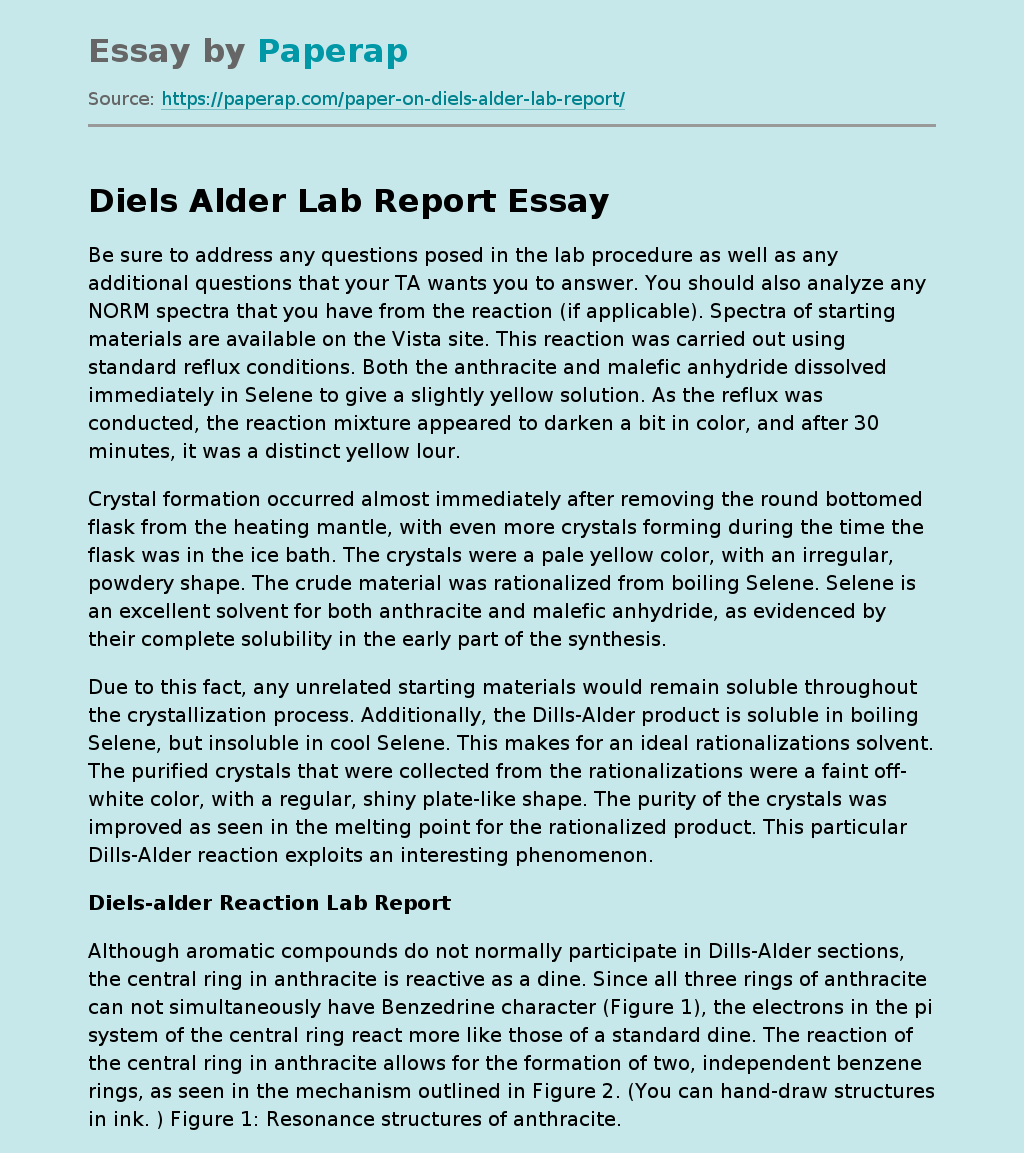Diels Alder Lab Report
Be sure to address any questions posed in the lab procedure as well as any additional questions that your TA wants you to answer. You should also analyze any NORM spectra that you have from the reaction (if applicable). Spectra of starting materials are available on the Vista site. This reaction was carried out using standard reflux conditions. Both the anthracite and malefic anhydride dissolved immediately in Selene to give a slightly yellow solution. As the reflux was conducted, the reaction mixture appeared to darken a bit in color, and after 30 minutes, it was a distinct yellow lour.
Crystal formation occurred almost immediately after removing the round bottomed flask from the heating mantle, with even more crystals forming during the time the flask was in the ice bath. The crystals were a pale yellow color, with an irregular, powdery shape. The crude material was rationalized from boiling Selene. Selene is an excellent solvent for both anthracite and malefic anhydride, as evidenced by their complete solubility in the early part of the synthesis.
Due to this fact, any unrelated starting materials would remain soluble throughout the crystallization process. Additionally, the Dills-Alder product is soluble in boiling Selene, but insoluble in cool Selene. This makes for an ideal rationalizations solvent. The purified crystals that were collected from the rationalizations were a faint off-white color, with a regular, shiny plate-like shape. The purity of the crystals was improved as seen in the melting point for the rationalized product. This particular Dills-Alder reaction exploits an interesting phenomenon.
Diels-alder Reaction Lab Report
Although aromatic compounds do not normally participate in Dills-Alder sections, the central ring in anthracite is reactive as a dine. Since all three rings of anthracite can not simultaneously have Benzedrine character (Figure 1), the electrons in the pi system of the central ring react more like those of a standard dine. The reaction of the central ring in anthracite allows for the formation of two, independent benzene rings, as seen in the mechanism outlined in Figure 2. (You can hand-draw structures in ink. ) Figure 1: Resonance structures of anthracite.
Diels Alder Lab Report. (2019, Dec 05). Retrieved from https://paperap.com/paper-on-diels-alder-lab-report/

